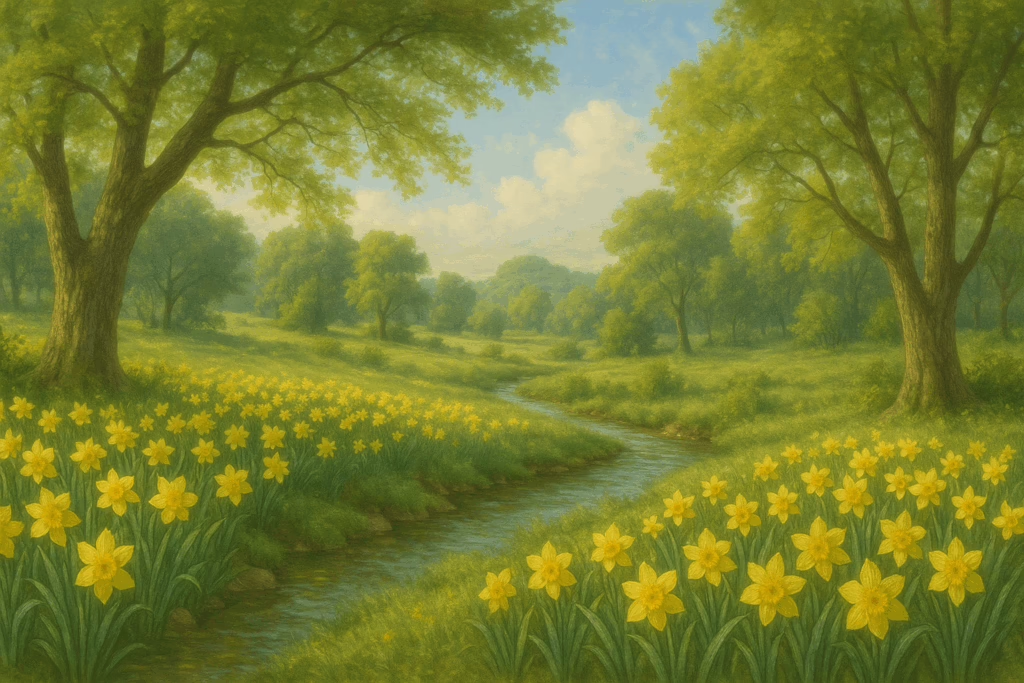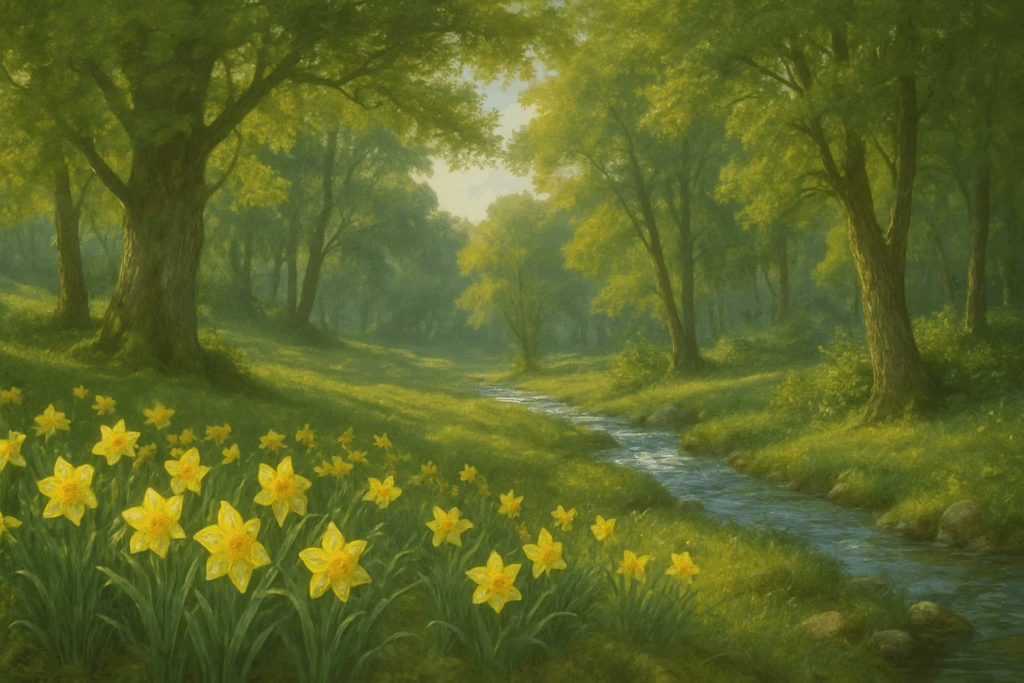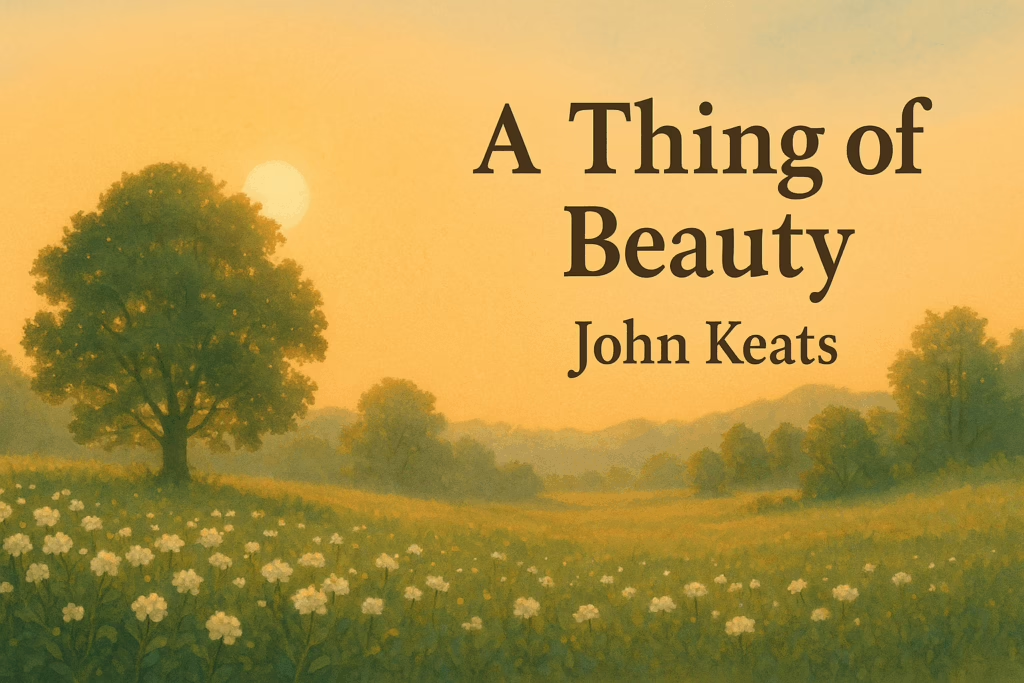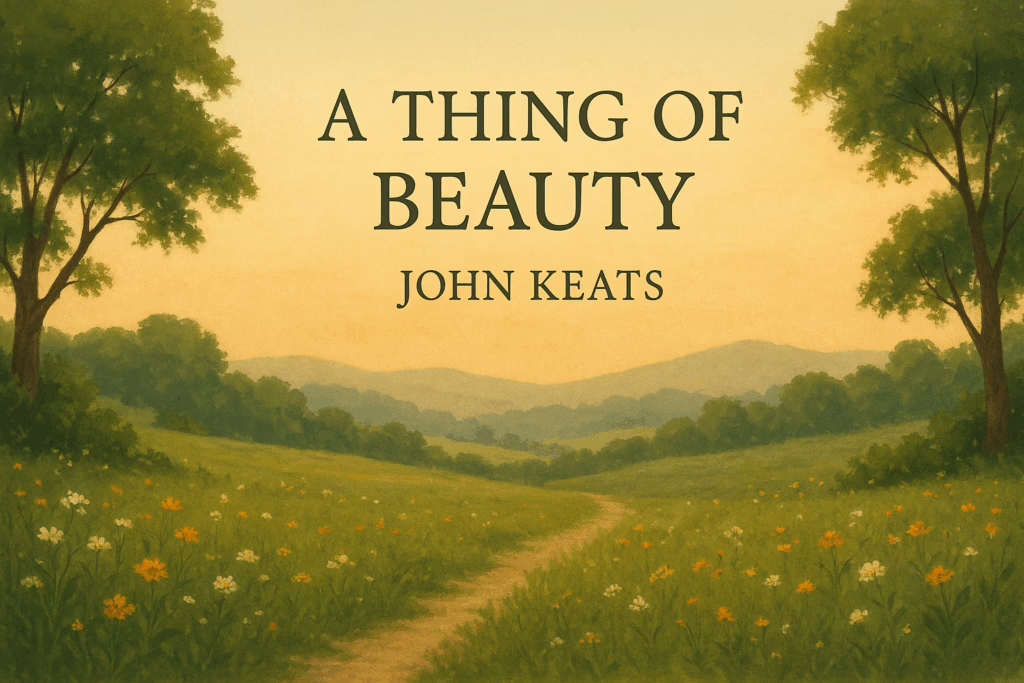John Keats’s A Thing of Beauty is a timeless celebration of the healing and uplifting power of beauty. Rooted in the Romantic tradition, the poem reminds readers that even in a world filled with sadness, moral decline, and everyday struggles, the presence of beauty—whether in nature, stories, or noble ideas—continues to nourish the human spirit. Its lines overflow with rich imagery and philosophical depth, making the poem not only delightful to read but also highly rewarding to analyse at the senior secondary level.
To help students deepen their understanding of the poem’s themes, expressions, and poetic devices, this article presents an extensive set of additional CBSE-style questions and answers. These questions are designed to encourage close reading, critical thinking, and meaningful reflection, enabling learners to appreciate both the poem’s literary artistry and its lasting relevance. Whether preparing for exams or exploring the richness of Keats’s vision, these questions offer a comprehensive guide to engaging with A Thing of Beauty at a deeper level.

A. VERY SHORT ANSWER QUESTIONS (1 mark)
1. What does Keats mean when he says a thing of beauty is “a joy forever”?
Keats means that a beautiful thing gives lasting joy and continues to inspire and uplift the human spirit throughout life.
2. What does the phrase “quiet breathing” suggest?
The phrase “quiet breathing” suggests a sense of calm, peace, and mental relaxation provided by beauty.
3. What are ‘rills’ as mentioned in the poem?
‘Rills’ are small, clear streams that create cool, pleasant shelters during hot weather.
4. What emotion does the word “despondence” convey?
The word “despondence” conveys a feeling of deep sadness or hopelessness.
B. SHORT ANSWER QUESTIONS (2–3 marks)
5. Why does the poet say that beauty increases with time?
The poet says that beauty increases with time because its memory continues to offer comfort, inspiration, and emotional nourishment long after the first moment of experiencing it.
6. What role does nature play in clearing the “pall” from human spirits?
Nature clears the “pall” from human spirits by offering beautiful sights such as the sun, moon, trees, daffodils, and streams, which lift sorrow and bring joy and peace to the mind.
7. How do the trees provide a “shady boon” in the poem?
The trees provide a “shady boon” by offering cool, protective shade to simple creatures like sheep, symbolizing nature’s generosity and comfort.
8. Why does Keats include tales of the “mighty dead” among the things of beauty?
Keats includes tales of the “mighty dead” because such heroic stories inspire admiration and help elevate the human spirit just as natural beauty does.

C. LONG ANSWER QUESTIONS (5–6 marks)
9. Discuss how Keats contrasts the dark realities of life with the uplifting power of beauty.
Keats contrasts the dark realities of life—such as despondence, lack of noble qualities, and the unhealthy and over-darkened paths created by human behaviour—with the uplifting power of beauty by showing how even amidst such gloom, some form of beauty always helps remove the pall from our spirits. He emphasizes that nature’s beauty, inspiring stories, and noble ideas refresh the mind and provide hope, making life worth living.
10. How does the imagery of the “endless fountain of immortal drink” capture the essence of beauty?
The imagery of the “endless fountain of immortal drink” captures the essence of beauty by portraying it as a divine, never-ending source of nourishment for the human soul. The comparison suggests that beauty flows continuously from heaven, refreshing people and sustaining their emotional well-being.
D. EXTRACT-BASED QUESTIONS
Extract:
“Some shape of beauty moves away the pall
From our dark spirits. Such the sun, the moon,
Trees old, and young, sprouting a shady boon…”
11. What is the “pall” that the poet refers to?
The “pall” refers to the sadness, gloom, and emotional darkness that weigh down the human spirit.
12. Name any two natural objects mentioned in this extract.
The sun and the moon are two natural objects mentioned in this extract.
13. How do these natural objects help human beings?
These natural objects help human beings by offering beauty that refreshes the mind and lifts the sorrow that burdens them.
Extract:
“And such too is the grandeur of the dooms
We have imagined for the mighty dead;
All lovely tales that we have heard or read;”
14. What does “grandeur of the dooms” refer to?
“Grandeur of the dooms” refers to the glorious and noble destinies imagined for great heroes who are no longer alive.
15. Why does the poet call these tales “lovely”?
The poet calls these tales “lovely” because they inspire admiration and emotional upliftment, just like the beauty found in nature.

E. VALUE-BASED / OPINION QUESTIONS
16. In what way can the appreciation of beauty improve modern human life?
The appreciation of beauty can improve modern human life by reducing stress, promoting emotional balance, and helping individuals recognize moments of peace and joy in a fast-paced world.
17. Do you think beauty has the power to heal mental suffering? Explain.
Yes, beauty has the power to heal mental suffering because it provides comfort, inspires positive thoughts, and brings hope even during difficult times, just as the poem describes beauty removing the “pall” from human spirits.
The additional questions provided in this article aim to strengthen both comprehension and critical appreciation of John Keats’s A Thing of Beauty. By engaging with these carefully crafted exercises, students can explore the poem’s rich imagery, philosophical depth, and emotional resonance in a more structured and meaningful way. Each question encourages learners to revisit the text, think independently, and connect Keats’s ideas to their own understanding of life and beauty.
Ultimately, these questions not only support exam readiness but also nurture a deeper sensitivity toward the natural and imaginative sources of joy that Keats so passionately celebrates. In revisiting the poem through these analytical lenses, readers are reminded that beauty—whether found in nature, stories, or human ideals—remains an enduring fountain of hope and inspiration in an often challenging world.



